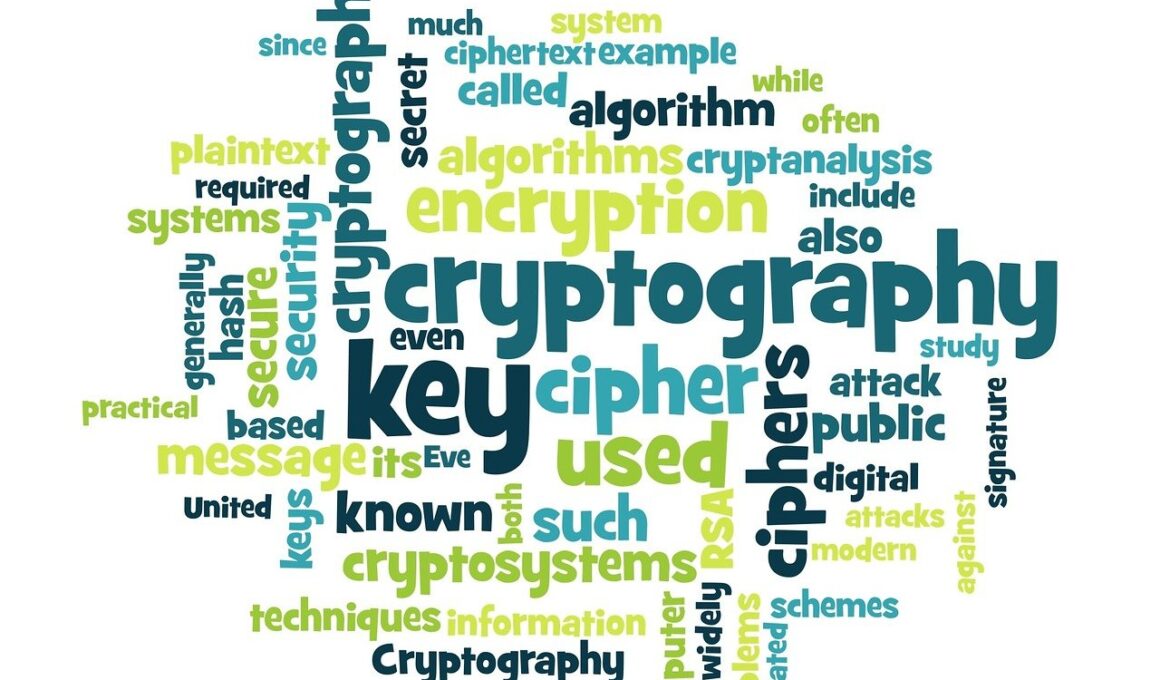Role of Encryption in Protecting Financial Reporting Data Integrity
In the finance sector, data integrity is crucial for maintaining the trust of stakeholders, investors, and clients. Data integrity ensures that the information presented in financial reports is accurate and reliable. Without proper safeguarding, financial data can be vulnerable to manipulation, leading to significant financial discrepancies. One of the most effective ways to protect this integrity is through the use of encryption. Encryption provides a layer of security by converting plain text into encoded data, making it unreadable without the appropriate decryption key. By implementing robust encryption protocols, organizations can significantly reduce the risk of unauthorized access to sensitive financial data. These protocols include advanced techniques, such as AES and RSA encryption, which ensure that data remains confidential and tamper-free. During transactions and data transfers, encrypting data protects it in transit from interception. Moreover, regulatory compliance is heightened as encrypted data meets various legal and industry standards, making audits smoother. By understanding and utilizing encryption effectively, organizations in finance can assure clients that their data integrity remains intact throughout the financial reporting process.
The importance of encryption extends beyond just safeguarding data; it also enhances the overall trust in financial reporting systems. Stakeholders depend on the accuracy and reliability of financial reports to make informed decisions. Implementing encryption minimizes the potential for fraud and financial statement manipulation. Additionally, organizations face heightened scrutiny from regulatory bodies, and protecting financial data can prevent costly violations. In this context, encryption plays a critical role in maintaining compliance with laws such as the Sarbanes-Oxley Act (SOX) and the General Data Protection Regulation (GDPR). These laws mandate stringent protection measures for sensitive information. When companies recognize encryption as a matter of compliance and integrity, they foster a culture of accountability. Employees are educated on the significance of data protection and the implications of negligence. Encouraging strong encryption practices not only secures financial reporting data but also enhances organizational reputation and client confidence. Issues like data breaches can tarnish a company’s standing; thus, reliable encryption strategies serve as a shield for reputations and finances alike. The continual evolution of encryption technologies further reinforces its role in sustaining data integrity in an ever-changing financial landscape.
Types of Encryption in Financial Reports
Two primary types of encryption are widely used in the finance industry: symmetric and asymmetric encryption. Symmetric encryption employs the same key for both encryption and decryption, making it essential to keep the key secure. This method is often faster and is suitable for encrypting large volumes of data quickly. On the other hand, asymmetric encryption uses two different keys: a public key for encryption and a private key for decryption. While this approach is generally slower, it provides a higher level of security, as the private key is kept confidential. Organizations must choose the appropriate encryption method based on specific use cases, operational needs, and regulatory requirements. For protecting sensitive financial reports, a hybrid approach often proves beneficial, leveraging the advantages of both symmetric and asymmetric encryption. By employing these encryption techniques, companies ensure that their financial reporting systems are resilient against malicious attacks, which could compromise data integrity. Furthermore, thorough implementation of encryption policies, along with employee training, empowers organizations to safeguard financial data effectively and maintain compliance with regulatory standards.
Another vital aspect of encryption in financial reporting is the management of encryption keys. Key management involves generating, storing, distributing, and revoking encryption keys securely. If a key is compromised, an organization risks exposing sensitive data, rendering the encryption ineffective. Effective key management strategies involve using secure key storage solutions such as Hardware Security Modules (HSMs) or Key Management Systems (KMS). Additionally, periodic key rotation and access controls are paramount to maintaining security. Encryption key policies need to be well-defined to ensure that only authorized personnel can access these keys. Implementing multi-factor authentication adds an extra layer of protection for sensitive keys. Regular training and audits of key management practices ensure that employees remain vigilant regarding security protocols. Furthermore, organizations must keep abreast of technological advancements in key management to remain agile against evolving cybersecurity threats. By focusing on robust encryption key management, organizations can enhance the overall security of financial reporting and maintain data integrity. Emphasis on key management ultimately leads to greater confidence in the safeguarding of financial data.
Challenges in Implementing Encryption
Despite its critical benefits, implementing encryption within finance poses several challenges. One common concern is the performance overhead associated with encryption processes. Since encryption algorithms require processing power, organizations wonder if performance will suffer, especially during peak transaction periods. Additionally, the complexity of integrating encryption into existing systems can deter organizations from adopting these practices uniformly. Compatibility issues may arise due to legacy systems that do not support modern encryption standards. Financial institutions also need to consider user training since employees must understand how to handle encrypted data appropriately. Balancing encryption security with user experience can be a significant challenge. Furthermore, organizations must remain vigilant against the potential risk of insider threats, as employees with access to keys could intentionally expose sensitive information. Developing a comprehensive encryption strategy that addresses these challenges involves continuous evaluation and adaptation. By fostering a culture of cybersecurity awareness and integrating encryption harmoniously across processes, organizations can overcome these obstacles. The commitment to data integrity through encryption must be fortified by adopting best practices and continually improving security measures.
In addition to standard encryption practices, organizations must stay informed about emerging technologies that enhance data security. Blockchain technology, for example, is gaining traction in the finance sector due to its potential for providing an immutable ledger. By integrating blockchain with encryption, organizations can achieve unprecedented levels of data integrity. This innovative combination ensures that financial data remains confidential, verifiable, and tamper-resistant. Furthermore, the use of advanced encryption methods such as homomorphic encryption allows computations on encrypted data without decrypting it, offering solutions for privacy concerns. These advancements can significantly impact how financial institutions manage sensitive data, paving the way for streamlined compliance with regulatory frameworks. As the financial landscape evolves, embracing emerging technologies is imperative for reinforcing data integrity. Continuous research and adoption of cutting-edge encryption solutions are essential strategies for sustaining data security and remaining competitive in the marketplace. Synchronizing technological progress with steadfast encryption practices enhances an organization’s ability to protect financial reporting data integrity effectively.
Conclusion and Best Practices
In conclusion, the role of encryption in protecting financial reporting data integrity cannot be overstated. Organizations must adopt a proactive approach to mitigating threats that jeopardize sensitive financial data. Best practices for implementing encryption include regularly updating encryption technology, conducting training for employees, and ensuring comprehensive key management strategies. Integrating encryption into the organizational culture promotes awareness of cybersecurity risks and supports compliance with regulatory standards. Furthermore, opting for a layered security approach that includes encryption alongside firewalls and intrusion detection systems significantly enhances data protection. Collaborating with cybersecurity experts can help identify vulnerabilities and improve security measures tailored specifically for financial reporting systems. Ultimately, fostering a robust security framework reliant on encryption will build trust with stakeholders and clients alike. Financial institutions that prioritize data integrity through comprehensive encryption policies will likely outperform competitors that underestimate its significance. Ensuring that financial reporting systems are secure enables organizations to effectively navigate a complex landscape while safeguarding their reputation and long-term success.
By emphasizing the essential role of encryption in financial reporting and embracing best practices, organizations can champion data integrity in a digital age. This commitment enhances trust among stakeholders and upholds the foundational principles of transparency and accountability necessary in the finance sector. The journey toward secure financial reporting demands continuous effort, innovation, and vigilance. Moreover, with the right encryption strategies, organizations can confidently navigate challenges that arise in an ever-evolving cyber world. As financial institutions look to the future, encryption will undoubtedly remain a cornerstone of their security efforts. Adopting a forward-thinking perspective on encryption not only motivates employees but also reassures clients about the safety of their investments. As technology progresses, encryption will evolve, offering new opportunities for improving data integrity while managing financial risks. Integrating encryption within business processes will be pivotal in responding effectively to emerging threats. With increased awareness and dedication to data protection, organizations can create resilient financial reporting systems that stand the test of time and inspire confidence in their commitment to maintaining data integrity.


